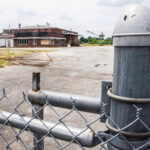The Prince of Wales Theatre, situated prominently on Coventry Street in the heart of London’s West End, boasts a captivating history filled with diverse performances, from dazzling revues to groundbreaking plays and musicals. This iconic venue has continually evolved, reflecting the changing tastes of audiences while remaining a cornerstone of London’s vibrant theatre scene.
The second Prince of Wales Theatre at this location was inaugurated in 1937, replacing an earlier theatre of the same name. The foundation stone of this new Art Deco masterpiece, designed by architect Robert Cromie, was laid by the beloved Gracie Fields on June 17th, 1937. In a memorable moment, Fields serenaded the construction workers, adding a touch of theatrical flair even before the theatre’s official opening. The doors opened to the public on October 27th, 1937, with Les Folies de Paris et Londres, a spectacular revue that epitomized the era’s appetite for lavish, non-stop entertainment, running from 2 pm to 11 pm. This initial success paved the way for other popular revues like Frivolites de France and Caprice Parisien, establishing the theatre as a prime destination for sophisticated variety entertainment.
The Prince of Wales Theatre adapted to changing times, showcasing not only revues but also significant cinematic events. In 1941, it hosted a season of Charlie Chaplin’s groundbreaking and controversial film The Great Dictator. Chaplin’s first foray into talkies, the film boldly parodied Hitler and reflected the anxieties of a world at war, demonstrating the theatre’s willingness to engage with topical and impactful works.
Post-war, the theatre welcomed legendary performers and productions that further cemented its reputation. In 1948, Mae West, the iconic actress and playwright, graced the stage in her self-penned comedy Diamond Lil. This performance marked a significant moment, bringing the Broadway sensation to London audiences two decades after its initial success and showcasing West’s enduring star power.
The late 1940s also saw the beloved British comedian Sid Field make his mark at the Prince of Wales Theatre. Having debuted in the West End at this very venue in Strike a New Note (1943), Field delivered his final London performance here in 1949 in Harvey. This comedy, centered around a man and his invisible six-foot-tall rabbit companion, was directed by Anthony Quayle and proved a fitting stage for Field’s comedic genius. Harvey returned to the Prince of Wales Theatre in 1975, this time with Hollywood icon James Stewart taking on the lead role of Elwood P. Dowd, highlighting the enduring appeal of this whimsical play.
The 1950s were largely defined by revues and variety acts at the Prince of Wales Theatre. Long-running, glamorous revues such as Paris to Piccadilly, Pardon My French, Paris by Night, and Plaisirs de Paris became audience favourites. The theatre’s stage was graced by an array of famous names from the world of comedy and entertainment, including Norman Wisdom, known for his slapstick charm, the versatile Peter Sellers, American comedy legend Bob Hope, British comedy stalwarts Terry Thomas and Dickie Henderson, comedic impressionist Hughie Green, and the beloved double act Morecambe and Wise, alongside Terry Scott. This decade solidified the Prince of Wales Theatre’s place as a premier venue for light-hearted and star-studded entertainment.
In 1959, The World of Suzie Wong premiered, marking a shift towards dramatic plays and achieving a record-breaking run for the theatre at the time with 832 performances. This poignant story of a Hong Kong prostitute and her relationship with an artist resonated deeply with audiences, demonstrating the theatre’s capacity to host more serious and emotionally engaging narratives.
The 1960s brought further diversity to the Prince of Wales Theatre. In 1963, the legendary Martha Graham and her renowned company of American dancers presented a short season. This included Clytemnestra, Graham’s only full-length work, widely considered her masterpiece, exposing London audiences to groundbreaking modern dance. 1966 saw the transfer of Funny Girl from Broadway, starring the sensational young Barbra Streisand in the iconic role of Fanny Brice. Streisand’s performance catapulted the production to even greater heights, and the song ‘People’ from the show became a Top 10 hit, further cementing the musical’s and the theatre’s place in popular culture.
The early 1970s continued this trend of eclectic and critically acclaimed productions. A 1972 revival of The Threepenny Opera, directed by Tony Richardson and featuring Vanessa Redgrave as Polly Peachum, boasted an impressive cast including Hermione Baddeley, Diana Quick, Miriam Margolyes, and Barbara Windsor. Later that year, Julian Slade’s musical Trelawny, which had originated at Sadler’s Wells and introduced Gemma Craven to a wider audience, also transferred to the Prince of Wales.
Danny La Rue, a celebrated drag entertainer, became a fixture in the 1970s, captivating audiences for 503 performances with his glamorous variety show starting in 1973. A decade later, in 1983, La Rue made history at the Prince of Wales Theatre by becoming the first man to portray Dolly Levi in Hello, Dolly!, further showcasing the theatre’s embrace of diverse and groundbreaking performances.
In 1982, Underneath the Arches, a musical celebrating the story and music of the Crazy Gang, starring Roy Hudd and Christopher Timothy as Flanagan and Allen, enjoyed a successful run of over a year, appealing to nostalgia and British musical heritage.
1993 witnessed the arrival of Andrew Lloyd Webber’s musical Aspects of Love, starring Michael Ball. This production became a phenomenal success, breaking all previous records to become the theatre’s longest-running show ever with an impressive 1,325 performances.
In the early 2000s, the Prince of Wales Theatre underwent significant renovations. Between 2003 and 2004, the auditorium, front-of-house areas, foyers, and bars were extensively expanded, refitted, and luxuriously refurbished by Arts Team at RHWL, under the management of Delfont Mackintosh Theatres. This ambitious project modernized the theatre while preserving its historical charm, ensuring its continued appeal to contemporary audiences.
The newly renovated Prince of Wales Theatre was officially reopened in 2004 by HRH the Prince of Wales himself on June 10th. The reopening gala was a charity performance of the global smash-hit musical MAMMA MIA!. In 2007, MAMMA MIA! surpassed Aspects of Love to become the longest-running production in the theatre’s history, demonstrating the venue’s capacity to host long-term, blockbuster shows.
In more recent times, the Prince of Wales Theatre continues to host groundbreaking and record-breaking productions. 2013 saw the arrival of the irreverent Broadway sensation The Book of Mormon. This musical comedy was an instant hit, winning four Olivier Awards and setting a new record for the highest single-day ticket sales in West End and Broadway history, confirming the Prince of Wales Theatre’s position at the forefront of contemporary musical theatre.
Through its long and varied history, the Prince of Wales Theatre on Coventry Street has proven itself to be a dynamic and enduring landmark in London’s West End. From its glamorous revue beginnings to its current status as a home for blockbuster musicals, the theatre continues to captivate audiences and contribute significantly to the cultural landscape of London.


